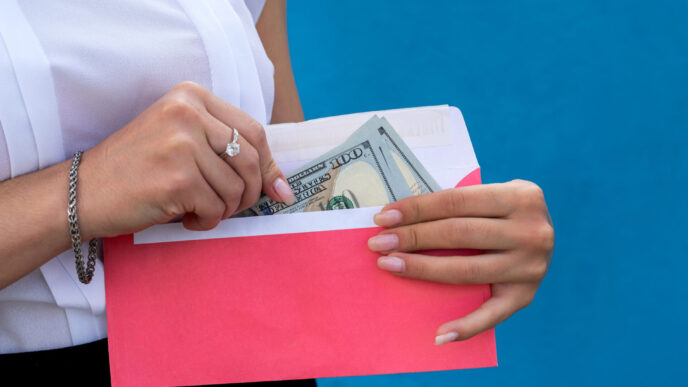Start Budgeting Smarter: A New Path to Financial Freedom
If your money disappears faster than you earn it, you’re not alone—and you’re not doomed. Most people are never taught how to budget their money right, let alone build savings or escape the paycheck-to-paycheck cycle. But here’s the good news: you can start today, and it doesn’t have to be overwhelming.
This isn’t about deprivation or turning into a financial minimalist overnight. It’s about understanding where your money goes, making conscious decisions, and setting yourself up for financial wins—small and big.
“Budgeting isn’t about having less. It’s about having control.”
💡 Why Budgeting Now Matters More Than Ever
We live in an age where:
- Rent eats up 30%–50% of monthly income.
- Subscription services quietly drain your bank account.
- Groceries cost more than ever.
- Emergencies happen without warning.
Budgeting isn’t optional anymore—it’s essential. But not just any budgeting. You need a method that works for you—not a one-size-fits-all spreadsheet someone else built.
Whether your goal is to save money fast, stop living paycheck to paycheck, or finally put together the best monthly budget plan for your lifestyle—this guide will walk you through the exact steps.
The Long-Term Impact of Poor Financial Planning
Without budgeting, financial mismanagement can have lasting negative consequences:
| Financial Habit | Long-Term Consequences |
|---|---|
| Overspending | Accumulation of debt, financial stress |
| Lack of Savings | No emergency funds, vulnerability to unexpected expenses |
| No Investment Strategy | Limited financial growth, delayed retirement |
| Living Paycheck to Paycheck | High dependency on monthly income, no financial security |
Ignoring financial planning leads to avoidable hardships, while proactive budgeting ensures stability and growth.
🚀 What You’ll Learn in This Guide
In the sections ahead, you’ll uncover:
- Simple ways to evaluate your income and spending.
- Proven budgeting methods (and how to choose one that fits your life).
- Real-world strategies to slash expenses without giving up the things you love.
- How to build an emergency fund even on a tight income.
- Techniques to crush your debt and stay out of it.
- Smart tactics to maximize your income and put your money to work.
You don’t need a finance degree. You just need clarity, consistency—and a system that doesn’t feel like punishment.
Let’s break down the myths, ditch the overwhelm, and help you budget your money right—so you can stop surviving and start thriving.
Understanding Your Financial Landscape
Before you can create an effective budget, you need a clear picture of your current financial situation. This step involves assessing your income, tracking expenses, and identifying financial habits that may be holding you back.
Assessing Your Income and Expenses
The first step in budgeting is understanding your cash flow—how much money you earn versus how much you spend.
Identifying Your Total Income
To budget effectively, you must have a clear idea of your total monthly income. This includes:
- Primary Salary or Wages – Your regular paycheck after taxes.
- Side Hustles or Freelance Income – Any additional sources of income.
- Passive Income – Rental income, dividends, or other earnings from investments.
- Government Benefits or Financial Aid – Any supplementary income such as social security or scholarships.
Understanding your complete financial inflow ensures that you budget based on accurate figures.
Tracking Expenses
Once you identify your income, the next step is tracking where your money goes. Categorize your expenses to spot areas where adjustments can be made.
Expense Category | Examples |
|---|---|
Fixed Expenses | Rent, mortgage, car payments, insurance |
Variable Expenses | Groceries, utilities, transportation |
Discretionary Spending | Dining out, entertainment, shopping |
Savings & Investments | Retirement contributions, emergency fund deposits |
Debt Repayments | Student loans, credit cards, personal loans |
Use budgeting apps like Mint, YNAB (You Need a Budget), or PocketGuard to track your expenses automatically.
Identifying Fixed vs. Variable Expenses
One of the most effective ways to manage your finances is by differentiating between fixed and variable expenses.
- Fixed Expenses remain constant each month. These include rent, insurance, loan payments, and subscriptions.
- Variable Expenses fluctuate, such as groceries, transportation, and entertainment.
Understanding which expenses are flexible allows you to make strategic cuts when needed.
Recognizing Unnecessary Spending
Many people underestimate how much they spend on non-essential purchases. Small expenses add up over time and can hinder financial progress.
Common Unnecessary Expenses:
- Subscription Services You Rarely Use (e.g., streaming platforms, gym memberships)
- Impulse Purchases (shopping sprees, fast food runs)
- Premium Coffee & Dining Out (small daily expenses that accumulate)
- Bank Fees & Late Payment Charges (avoidable with proper financial tracking)
- Luxury Upgrades & Brand Name Products (cheaper alternatives often exist)
Actionable Tip:
For one month, categorize every expense as “Need” or “Want” to see where you can cut back.
Setting Financial Goals
A budget without goals is just a set of numbers. Define your short-term, mid-term, and long-term financial objectives to give your budget direction.
| Goal Type | Examples | Timeframe |
|---|---|---|
| Short-Term Goals | Pay off credit card debt, save for a vacation | 6 months – 1 year |
| Mid-Term Goals | Build an emergency fund, buy a car | 1–5 years |
| Long-Term Goals | Retirement savings, buying a home | 5+ years |
SMART Goal Framework:
Ensure your goals are Specific, Measurable, Achievable, Relevant, and Time-bound (SMART).
For example:
❌ “I want to save money.” → ✅ “I will save $5,000 for an emergency fund within 12 months by setting aside $417 per month.”
Key Takeaways
- Track Your Income and Expenses: Knowing where your money goes helps you stay in control.
- Distinguish Between Fixed and Variable Costs: Understanding your spending patterns makes budgeting easier.
- Cut Back on Unnecessary Spending: Identify areas where you can reduce expenses without sacrificing quality of life.
- Set Financial Goals: Having clear objectives gives your budget purpose and motivation.
Creating a Budget That Works for You
Once you’ve analyzed your financial landscape, the next step is structuring a budget that aligns with your income, expenses, and goals. A well-designed budget isn’t about restriction—it’s about giving yourself financial freedom while ensuring your priorities are covered.
Choosing the Right Budgeting Method
There is no one-size-fits-all approach to budgeting. The right method depends on your financial situation, spending habits, and personal preferences. Below are some of the most effective budgeting strategies:
- The 50/30/20 Rule
- 50% Needs – Rent, food, healthcare, utilities.
- 30% Wants – Entertainment, dining out, hobbies.
- 20% Savings & Debt Repayment – Emergency fund, retirement, investments.
- Zero-Based Budgeting (ZBB)
- Every dollar has a job, meaning income minus expenses equals zero.
- Ideal for people who want full control over where their money goes.
- Envelope System (Cash-Only Budgeting)
- Physical envelopes for different spending categories (e.g., groceries, entertainment).
- Once an envelope is empty, no more spending in that category.
- Pay-Yourself-First Method
- Savings and investments are prioritized before spending on other expenses.
- Encourages consistent wealth building.
- Reverse Budgeting
- Focuses on saving first, then adjusting expenses accordingly.
- Great for those with financial goals like early retirement or large purchases.
Each method has its strengths—choosing one depends on your financial goals and discipline.
The 50/30/20 Rule Explained
One of the most popular and simple budgeting frameworks is the 50/30/20 rule, originally proposed by Senator Elizabeth Warren. This method divides your income into three clear categories:
| Category | Percentage of Income | Examples |
|---|---|---|
| Needs | 50% | Rent, utilities, groceries, insurance, minimum loan payments |
| Wants | 30% | Dining out, streaming subscriptions, hobbies, travel |
| Savings & Debt | 20% | Retirement savings, emergency fund, debt repayments |
If you find yourself struggling with debt or trying to save aggressively, adjusting the percentages (e.g., 60/20/20) may work better for your situation.
Zero-Based Budgeting Approach
With the zero-based budget, every dollar of income is assigned a purpose. This method ensures that no money is wasted or unaccounted for.
How to Implement Zero-Based Budgeting:
- Calculate Your Income – Total after-tax earnings.
- List All Expenses – Include fixed, variable, and discretionary spending.
- Allocate Every Dollar – Ensure income minus expenses equals zero.
- Adjust Monthly – Regularly review and tweak based on changing needs.
Example of a Zero-Based Budget for a $4,000 Monthly Income:
| Category | Amount |
|---|---|
| Rent/Mortgage | $1,200 |
| Utilities & Internet | $200 |
| Groceries | $500 |
| Transportation | $300 |
| Insurance | $250 |
| Entertainment | $200 |
| Savings | $800 |
| Debt Repayment | $550 |
This system is particularly effective for people who need close monitoring of their finances.
Envelope System and Cash-Only Budgeting
For those who struggle with overspending, the envelope system provides a hands-on way to stay disciplined.
How It Works:
- Withdraw cash and divide it into envelopes labeled for different expenses.
- Use only the cash in the envelope for that category.
- Once the envelope is empty, spending stops for that month.
While this method isn’t ideal for digital purchases, some budgeting apps offer virtual envelopes, blending the concept with modern banking.
Digital Tools and Apps for Budgeting
Technology makes budgeting easier than ever. Consider these popular budgeting tools:
| App Name | Key Features |
|---|---|
| Mint | Tracks expenses, connects to bank accounts, provides spending insights |
| YNAB (You Need A Budget) | Zero-based budgeting, goal tracking, debt payoff strategies |
| PocketGuard | Prevents overspending, analyzes cash flow, suggests budget improvements |
| GoodBudget | Digital envelope system for better spending control |
| EveryDollar | Simple budgeting with goal-focused saving |
Using these tools can help automate tracking and reduce the hassle of manual budgeting.
Key Takeaways
- Different budgeting methods suit different lifestyles—choose one that aligns with your financial habits.
- The 50/30/20 rule is great for simplicity, while zero-based budgeting offers complete control.
- The envelope system is effective for cash-based spenders, preventing overspending.
- Budgeting apps automate tracking, making it easier to stay on top of your finances.

Cutting Expenses Without Sacrificing Quality of Life
Reducing expenses doesn’t mean giving up everything you enjoy. Smart budgeting allows you to cut costs while maintaining a fulfilling lifestyle. The key is to identify unnecessary spending and adopt cost-saving strategies that align with your goals.
Smart Grocery Shopping Strategies
Food expenses are one of the largest variable costs in a household budget. However, with careful planning, you can save significantly without sacrificing quality.
Ways to Save on Groceries:
- Make a Shopping List & Stick to It – Impulse purchases add up quickly.
- Buy in Bulk – Non-perishable items like rice, pasta, and canned goods are cheaper in bulk.
- Use Coupons & Cashback Apps – Apps like Ibotta and Rakuten offer cashback on groceries.
- Opt for Store Brands – Generic brands are often just as good as name brands but cost 20–30% less.
- Plan Meals in Advance – Reduces food waste and unnecessary spending.
- Shop with a Full Stomach – Hunger leads to impulse buying.
- Compare Prices per Unit – Larger packages aren’t always cheaper; check the price per ounce or gram.
Lowering Utility Bills
Reducing household expenses starts with lowering energy and utility bills. Small changes in habits can lead to significant savings over time.
Energy-Saving Tips:
- Switch to LED Bulbs – Uses 75% less energy than incandescent bulbs.
- Unplug Electronics When Not in Use – Standby power drains electricity.
- Use a Programmable Thermostat – Adjusts heating/cooling automatically, cutting energy costs.
- Wash Clothes in Cold Water – Saves on heating costs.
- Seal Windows & Doors – Prevents heat/cool air loss, reducing energy waste.
Subscription Audits: Cutting Unused Services
Many people unknowingly pay for services they no longer use. A subscription audit can free up hundreds of dollars per year.
Steps to Reduce Subscription Costs:
- Review Bank & Credit Card Statements – Identify recurring charges.
- Cancel Unused or Overlapping Services – Do you really need three streaming services?
- Opt for Annual Billing Where Possible – Many services offer discounts for upfront yearly payments.
- Negotiate with Providers – Call customer support and ask for a lower rate.
- Share Subscriptions – Some platforms allow family or group plans to split costs.
Affordable Entertainment Options
You don’t have to spend a fortune to enjoy life. Here are ways to have fun without breaking the bank:
| Entertainment Type | Low-Cost Alternatives |
|---|---|
| Movies & TV | Free streaming services, library rentals |
| Dining Out | Home-cooked meals, potluck dinners |
| Gym Memberships | Outdoor workouts, free YouTube fitness videos |
| Concerts & Events | Community events, free museum days |
| Travel | Staycations, budget airlines, travel reward points |
Instead of eliminating entertainment, find more cost-effective ways to enjoy your favorite activities.
DIY and Cost-Saving Hacks
Many everyday services can be done cheaper (or free) at home.
Examples of DIY Savings:
- Brew Your Own Coffee – A $5 daily coffee adds up to over $1,800 per year.
- Haircuts at Home – Learn simple trims to reduce salon visits.
- Basic Home Repairs – YouTube tutorials can save you hundreds on minor repairs.
- Homemade Cleaning Products – Vinegar and baking soda work wonders as cost-effective cleaners.
Key Takeaways
- Smart grocery shopping can significantly reduce food costs without sacrificing quality.
- Utility bill adjustments lead to lower monthly expenses.
- Subscription audits help eliminate unnecessary recurring charges.
- Low-cost entertainment options ensure you still have fun while saving.
- DIY solutions can replace costly services and daily expenses.
Building an Emergency Fund
An emergency fund is a financial safety net that protects you from unexpected expenses, such as medical emergencies, car repairs, or job loss. Without one, people often rely on credit cards or loans, leading to debt accumulation. Prioritizing this fund is a crucial step toward financial stability.
Why You Need an Emergency Fund
Life is unpredictable, and financial setbacks can happen at any time. An emergency fund ensures that a single crisis doesn’t derail your financial progress.
Key Reasons to Have an Emergency Fund:
- Job Loss Protection – Covers essential expenses if you lose income.
- Medical Emergencies – Helps avoid medical debt due to unexpected health issues.
- Home & Car Repairs – Prevents the need for costly loans.
- Peace of Mind – Reduces financial stress and provides a sense of security.
According to financial experts, nearly 60% of Americans don’t have enough savings to cover a $1,000 emergency. An emergency fund ensures you’re prepared for life’s surprises.
How Much Should You Save?
The recommended amount for an emergency fund depends on your personal circumstances. The general guideline is to save at least 3 to 6 months’ worth of living expenses.
| Situation | Recommended Savings |
|---|---|
| Single, stable job | 3 months of expenses |
| Family with dependents | 6 months of expenses |
| Self-employed or freelancer | 6–12 months of expenses |
| High medical expenses | 6+ months of expenses |
Start with a small, achievable goal, such as saving $500–$1,000, then gradually build toward your target.
Where to Keep Your Emergency Fund
Your emergency savings should be easily accessible but separate from your everyday spending money to prevent unnecessary withdrawals.
| Savings Option | Pros | Cons |
|---|---|---|
| High-Yield Savings Account | Easy access, earns interest | Limited withdrawals per month |
| Money Market Account | Higher interest rates, check-writing options | Minimum balance requirements |
| Cash in a Safe Place | Immediate access | No interest earned, risk of loss |
| CD (Certificate of Deposit) | Higher interest than savings | Penalty for early withdrawal |
For most people, a high-yield savings account is the best balance between accessibility and interest growth.
Steps to Start Your Emergency Fund
Even if you’re on a tight budget, you can build an emergency fund over time with consistent effort and small contributions.
Step-by-Step Plan:
- Set a Realistic Goal – Start with a target of $500–$1,000.
- Open a Separate Account – Choose a high-yield savings account to grow your money.
- Automate Your Savings – Set up an automatic transfer each payday.
- Cut Unnecessary Expenses – Redirect savings from subscriptions, dining out, or impulse purchases.
- Use Windfalls Wisely – Tax refunds, bonuses, or extra income should go toward savings.
- Increase Contributions Gradually – Once you reach your first goal, aim for 3 months of expenses, then 6 months.
Pro Tip: Treat your emergency fund like a non-negotiable bill—a fixed part of your budget.
What Qualifies as an Emergency?
Not every expense is an emergency. Use this checklist to determine if you should dip into your fund:
✅ True Emergencies:
- Unexpected medical expenses
- Urgent home or car repairs
- Job loss or reduced income
- Essential travel for a family crisis
❌ Not an Emergency:
- Vacations or shopping sprees
- Regular bills (should be budgeted separately)
- Non-urgent home upgrades
- Holiday gifts or celebrations
Using your emergency fund only for true emergencies ensures that it remains available when you need it most.
Key Takeaways
- An emergency fund protects against unexpected financial setbacks like job loss or medical emergencies.
- Aim to save at least 3–6 months’ worth of living expenses based on your financial situation.
- Keep funds in a high-yield savings account for easy access and growth.
- Build your fund gradually by setting small goals, automating savings, and using extra income wisely.
- Use the fund only for real emergencies, not everyday expenses.
References and Inspirational Resources
- Ramsey, Dave. The Total Money Makeover: A Proven Plan for Financial Fitness. Thomas Nelson.
- Harnish, Verne. Scaling Up: How a Few Companies Make It…and Why the Rest Don’t. Gazelles Inc.
- U.S. Bureau of Labor Statistics – Consumer Expenditures Reports and Spending Patterns.
- NerdWallet – Budgeting tips, calculators, and debt repayment strategies.
- Consumer Financial Protection Bureau (CFPB) – Guidance on building emergency savings and managing household debt.
- Investopedia – Articles on personal finance, savings plans, and budgeting methods.
- Fidelity Investments – Educational resources on retirement planning and long-term saving strategies.















